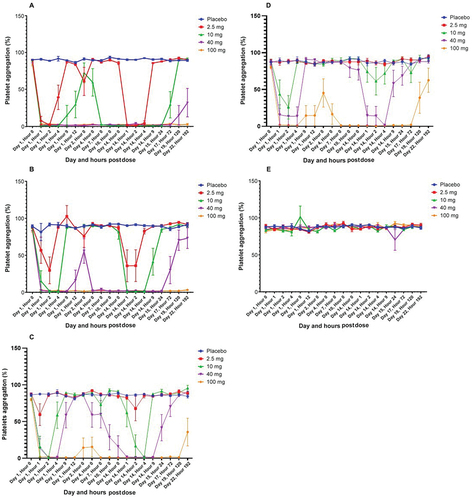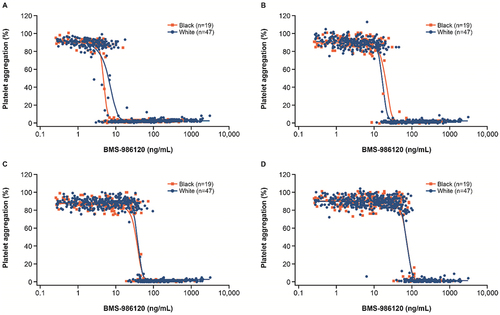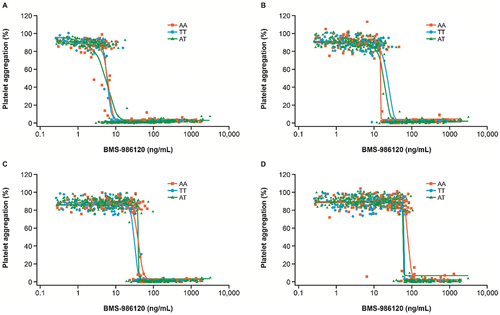Figures & data
Figure 1. Plasma concentration‒time profiles of BMS-986120.

Table I. Pharmacokinetics.
Figure 2. Induced platelet aggregation in the multiple-ascending dose (MAD) study.

Figure 3. Platelet aggregation responses to PAR4-AP by self-identified race.

Figure 4. Inhibition of human platelet aggregation by BMS-986120 in participants sorted by PAR4 A120T variants.

Figure 5. Influence of A120T variants on PAR4-AP-induced calcium mobilization.

Figure 6. Saturation binding of 3H-BMS-986120.

Supplemental Material
Download PDF (418.9 KB)Data availability statement
Requests to access the dataset from qualified researchers trained in human participant confidentiality protocols may be made via Bristol Myers Squibb’s online request system at https://fasttrack-bms.force.com/.
